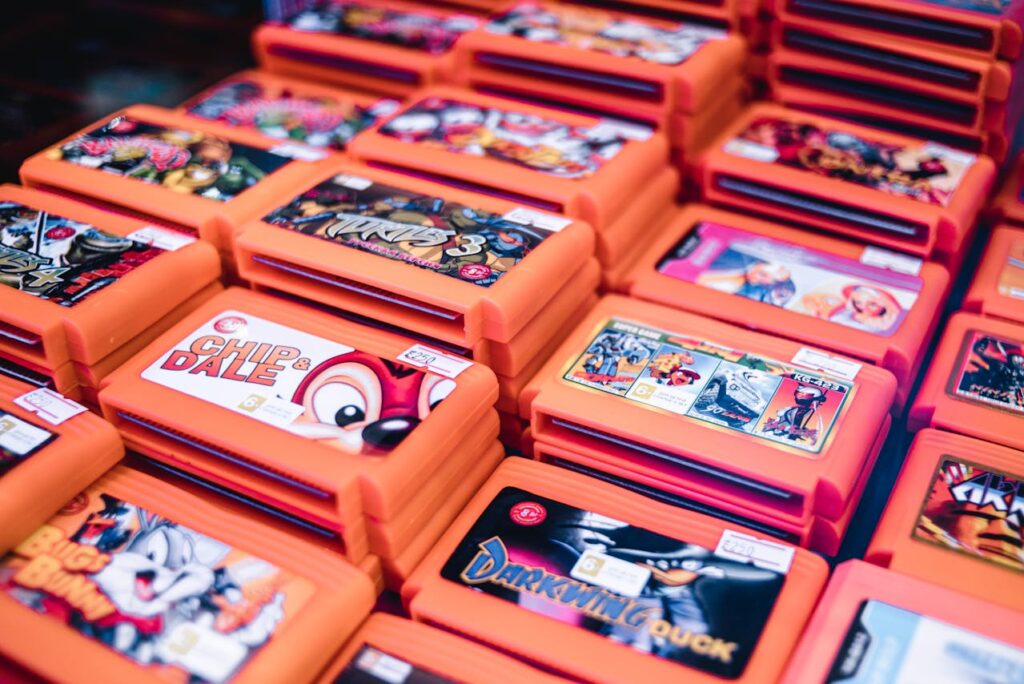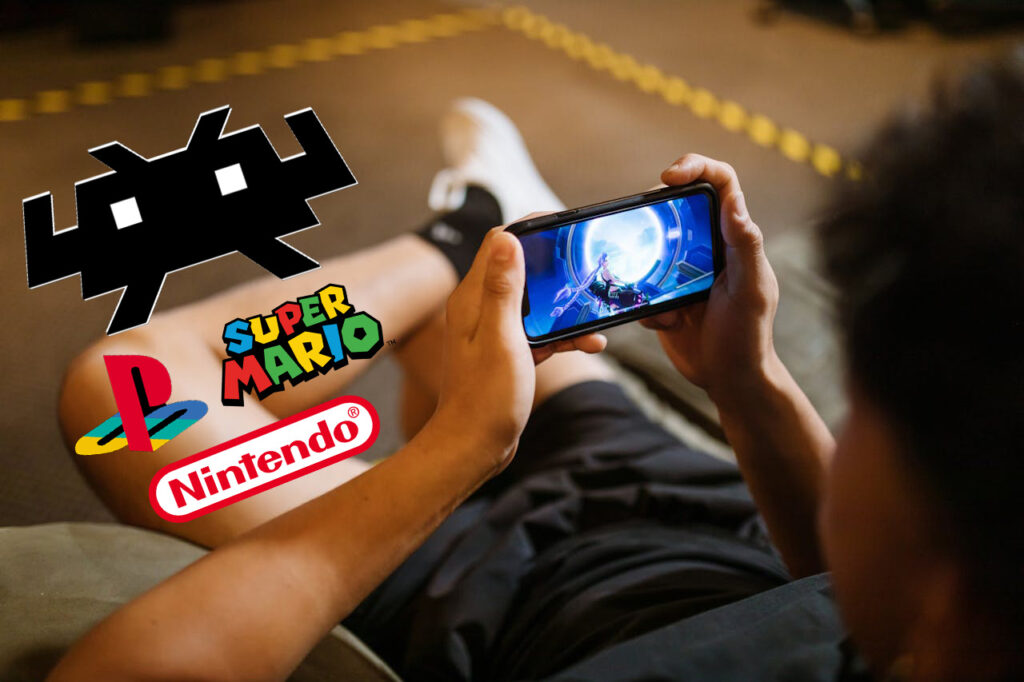Building a retro game console is an exciting project that lets you relive the glory days of classic gaming. Whether you’re a seasoned tech enthusiast or a novice, this guide will walk you through the process of creating your own retro gaming console using a Raspberry Pi. By the end, you’ll have a fantastic device that can play all your favorite old-school games. Let’s dive in!
What You’ll Need
Before we start, gather the following materials:
- Raspberry Pi (Model 3 or 4 recommended)
- MicroSD Card (32GB or larger)
- MicroSD Card Reader
- Power Supply for Raspberry Pi
- HDMI Cable
- USB Game Controllers
- Case for Raspberry Pi (optional but recommended)
- Keyboard and Mouse (for initial setup)
- Heat Sinks and Fan (optional, for better cooling)
Step 1: Prepare the Raspberry Pi
Download the RetroPie Image
The first step in building your retro game console is to download the RetroPie image. RetroPie is a software library used to emulate retro video games on the Raspberry Pi, and it is designed to be user-friendly and highly customizable.
- Visit the RetroPie Website
- Go to the RetroPie download page.
- Download the appropriate image for your Raspberry Pi model (either Raspberry Pi 3 or Raspberry Pi 4).
- Write the Image to the MicroSD Card
- Use a tool like balenaEtcher to write the RetroPie image to your MicroSD card. Etcher is a simple and reliable tool for flashing operating systems to SD cards and USB drives.
- Insert the MicroSD card into your card reader, select the RetroPie image file you downloaded, and follow the prompts in Etcher to write the image to the card. for more help please checkout balenaetcher’s FAQ page.
- Insert the MicroSD Card into the Raspberry Pi
- Once the image is successfully written, remove the MicroSD card from the card reader and insert it into the MicroSD card slot on your Raspberry Pi.
Step 2: Set Up RetroPie
Connect Peripherals and Power Up
To start the initial setup, you need to connect all necessary peripherals to your Raspberry Pi.
- Connect Your USB Game Controllers
- Plug your USB game controllers into the USB ports on the Raspberry Pi.
- Connect HDMI Cable
- Connect one end of the HDMI cable to the Raspberry Pi and the other end to your TV or monitor.
- Connect Keyboard and Mouse
- For the initial setup, it’s easier to use a keyboard and mouse. Connect them to the Raspberry Pi.
- Power Supply
- Plug in the power supply to your Raspberry Pi. Once you connect the power supply, the Raspberry Pi will automatically boot up.
Initial Configuration
On first boot, RetroPie will prompt you to configure your game controller.
- Configure Game Controller
- Follow the on-screen instructions to set up your controller. You will be asked to press buttons to map them to various functions.
- If you make a mistake, you can reconfigure the controls later by navigating to the RetroPie menu.
- Access the RetroPie Menu
- Press
F4on your keyboard to access the command line interface. - Type
emulationstationand pressEnterto start the RetroPie interface.
- Press
- Network Setup
- It’s essential to connect your Raspberry Pi to the internet for downloading additional software and game ROMs.
- If you are using Wi-Fi, navigate to the Wi-Fi settings in the RetroPie menu, select your network, and enter your Wi-Fi password.
Step 3: Add Game ROMs
To play games on your new retro game console, you need to add game ROMs. ROMs are digital copies of games that can be played on emulators.
Transfer ROMs via USB
- Format USB Drive
- Format a USB drive to FAT32. This can usually be done through the disk management utility on your computer.
- Create Retropie Folder
- Create a folder named
retropieon the USB drive.
- Create a folder named
- Insert USB Drive into Raspberry Pi
- Insert the USB drive into the Raspberry Pi. Wait for a few minutes until the Raspberry Pi creates the necessary folders inside the
retropiefolder on the USB drive.
- Insert the USB drive into the Raspberry Pi. Wait for a few minutes until the Raspberry Pi creates the necessary folders inside the
- Transfer ROMs
- Remove the USB drive from the Raspberry Pi and plug it into your computer.
- Inside the
retropiefolder on the USB drive, you will find folders for different game systems (e.g.,nesfor Nintendo Entertainment System,snesfor Super Nintendo Entertainment System). - Copy your ROM files into the appropriate system folders.
- Reinsert USB Drive into Raspberry Pi
- Reinsert the USB drive into the Raspberry Pi. RetroPie will automatically detect the ROMs and transfer them to the internal storage.
Transfer ROMs via Network
If you prefer, you can transfer ROMs over your network.
- Access Raspberry Pi on Your Network
- On a computer, open a file explorer and type
\\retropiein the address bar (Windows) orsmb://retropie(Mac).
- On a computer, open a file explorer and type
- Transfer ROMs
- Navigate to the
romsfolder. - Drag and drop your ROM files into the appropriate system folders.
- Navigate to the
Step 4: Enhance Your Retro Gaming Console
Now that your console is set up and you have added your favorite games, it’s time to enhance your retro gaming console by installing additional emulators and customizing the interface.
Install Additional Emulators
RetroPie supports a wide range of emulators. You can install more emulators to expand the variety of games you can play.
- Navigate to RetroPie Setup Script
- In the RetroPie menu, select
RetroPie Setup.
- In the RetroPie menu, select
- Manage Packages
- Select
Manage Packages, thenManage Optional Packages.
- Select
- Choose Emulators
- Browse through the list of available emulators and select the ones you want to install.
- Follow the on-screen instructions to install the selected emulators.
Configure the Emulators
Each emulator might require specific configurations for optimal performance.
- Access Emulator Settings
- Navigate to the
Configuration/Toolsmenu in the RetroPie Setup script.
- Navigate to the
- Configure Each Emulator
- Select the emulator you want to configure and adjust the settings as needed. This may include video settings, controller configurations, and more.
Add BIOS Files
Some emulators require BIOS files to run games properly. These BIOS files are proprietary, so make sure you legally own them.
- Transfer BIOS Files
- Transfer the BIOS files to the appropriate folders in the RetroPie system. This can usually be done via USB or network transfer, similar to transferring ROMs.
- Verify BIOS Files
- Check the RetroPie documentation to ensure you have placed the BIOS files in the correct location and that they are named correctly.
Step 5: Customize and Optimize
To get the most out of your retro gaming console, you can customize the interface and optimize performance settings.
Change Themes
RetroPie allows you to customize the look of your interface with themes.
- Navigate to UI Settings
- In the RetroPie menu, go to
UI Settings.
- In the RetroPie menu, go to
- Select Theme
- Browse through the available themes and select the one you like. You can also download additional themes from the internet.
Set Up Save States
Save states allow you to save your game progress at any point, which is particularly useful for difficult games.
- Access Emulator Settings
- In the RetroPie menu, go to
Configuration/Tools.
- In the RetroPie menu, go to
- Configure Save States
- Enable save states for the emulators you use. You can usually assign a button combination to save and load states.
Enable RetroAchievements
RetroAchievements add an extra layer of fun by providing achievements for classic games.
- Create RetroAchievements Account
- Sign up for an account at RetroAchievements.org.
- Sync RetroPie with RetroAchievements
- In the RetroPie menu, go to
RetroAchievements Settings. - Enter your RetroAchievements username and password.
- In the RetroPie menu, go to
- Enable RetroAchievements
- Enable RetroAchievements for the emulators you use. This will allow you to earn achievements while playing your favorite games.
Conclusion
Building a retro game console is a rewarding project that brings the magic of classic gaming to your modern setup. By following this guide, you now know how to build a retro gaming console, how to make a retro gaming console, and specifically, how to make a game console with Raspberry Pi. Dive into the nostalgia of retro gaming and enjoy countless hours of fun with your custom-built console.
If you found this guide helpful, be sure to share it with fellow retro gaming enthusiasts and let us know your favorite retro games in the comments below!



